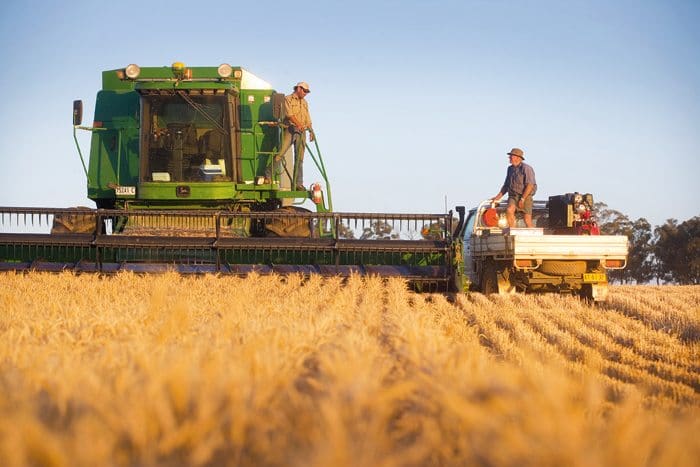Latest listings on AgJobs Central:
- Chief Executive Officer – Crop Protection, Sydney NSW (Rimfire client)
- Opportunities – Pardoo Station, Pilbara Region WA (Pardoo Wagyu)
- Plant/Machinery Operator, Nowendoc NSW (Nowendoc Run)
- Farm Manager, Cattle & Fodder Cropping, Southern Highlands NSW (DroverAg client)
- Grower Services Manager, Katherine – NT (Rimfire Resources client)
- Machinery Operator, Caroona Feedlot – NSW (JBS)
- Farm Hand Broadacre Cropping, Western Downs Qld (DroverAg client)
- Broadacre Cropping & Hay Farm Hand, Swan Hill Vic (DroverAg client)
- Fertiliser Salesperson – Qld (Pacific Fertilisers)
- Canola Trader, Melbourne Vic (Rimfire client)
- Junior Trader – Grains, Melbourne Vic (Rimfire client)
- Commodity Merchant – Tamworth & North West NSW (Rimfire client)
- Station Manager, Mittiebah Station NT (NAPCo)
- Property Manager, Tobermorey Station – NT (Redrock Trading Co)
- Station manager, Mt Hope Station NSW (Spinifex Recruiting client)
- Station Hand/Stockman, Nowendoc NSW (Nowendoc Run)
- Senior Station Hand Regenerative Grazing Operation, Moura Qld (DroverAg client)
- Farm Hand Mixed Farming, Fingal Tas (DroverAg client)
- Assistant Farm Manager – South Gippsland (SEJ Livestock client)
- Software Technical Support Consultant (eLynx)
- Procurement Manager, Goondiwindi – Qld (Agricultural Appointments client)
- Sales Manager – Vic/Tas (TSS Group)
- Business Analyst, Wagga Wagga NSW (MH Premium Farms)
- Area Sales Manager, Devonport & North West Tas (Rimfire client)
Click here to access these and other exciting meat and livestock supply chain jobs currently listed on AgJobs Central.
THERE is significant support among primary industry stakeholders, employers, unions and trainers for the development of a specific national Ag Trade Apprenticeship program, recent surveys show.
The Federal Government-run, but industry-led Skills Insight body, one of ten national Jobs and Skills Councils, works with stakeholders towards improving skills and training across the agribusiness, fibre, food, animal and environmental care industries.
Skills Insight recently undertook work to gauging support for an agricultural trade apprenticeship program.
A career in agriculture, such as in livestock production, crop production or land management, offers individuals the opportunity to become skilled in aspects of agronomy, animal science, digital technologies, mechanical operations, supply chains, logistics, and business management, a Skills Australia report said.
“It also allows them to have a profound impact on the broader community by contributing to the food security of Australia and being at the forefront of climate-smart solutions and practices. Improving the visibility of career pathways and enhancing the attractiveness of a career in ag are crucial steps in addressing the current workforce challenges faced by this industry, particularly when it comes to attracting new entrants,” Skills Australia said.
Recent survey and research work showed that an Ag Trade Apprenticeship would have the greatest chance of helping to alleviate the skills and labour shortages being experienced in agriculture, build the future workforce, provide people with access to secure, fairly paid jobs, and remove barriers to employment with a multi-pronged approach including:
- training product development
- training and assessment resource development
- careers promotion activities to attract young people and other cohorts
- promotion of the trade-style occupation brand
- employer support resources
- incentives from the Australian Government.
Project Insights
There is significant support for the development of an Ag Trade Apprenticeship among industry participants, Skills Trade concluded – however there were also some concerns raised about whether the introduction of a new and untested program could potentially compromise successful training pathways that are currently in place.
“However, there is considerable evidence to suggest that, with the right implementation and support mechanisms in place, an Ag Trade Apprenticeship could be an attractive pathway for new entrants, increase the professionalism in the industry, improve safety performance, and help to alleviate current and future skill shortages,” it said.
Potential Next Steps
The report outlined a number of steps that needed to be taken for the successful implementation of an Ag Trade Apprenticeship.
There are potential future projects that could advance the process. These could include career pathway mapping and the development of an apprenticeship qualification and training materials to support its delivery. Potential projects would be subject to evidence of continuing industry support, training delivery viability for one or more RTOs and Department approval to keep things moving towards an Ag Trade Apprenticeship.
It was suggested that an appropriate Certificate III-level trade qualification could be developed, initially based on three identified sectors, and, subject to delivery success, could be extended to other related sectors over time.
Delivery of this qualification would be dependent on:
- Designing a qualification with approximately 20 core units and between 12-18 additional units required as electives.
- The development of nationally consistent, locally contextualised assessment and training resources, including a delivery guide to map out the period of the apprenticeship to allow sufficient time for building overall competency.
- The development of an employer guide for the apprenticeship, including employment, supervision and training obligations and expectations, to support the capabilities and knowledge of the employer or supervisor and enable the apprentice to safely attain the standards of skills and knowledge required for agricultural occupations.
- It may also be useful to develop specialist upskilling Skill Sets to promote ongoing skills development.
Consultation
At the commencement of the project, a steering committee of employers, industry bodies, unions and other relevant parties was established to guide research into the dynamics of an Ag Trade Apprenticeship.
Skills Insight ran consultation workshops, including face-to-face workshops in major agricultural production locations across each state and territory and three online workshops with each including a workforce functional analysis in either broadacre cropping, diary production or livestock production.
The WFAs were part of example qualification research and testing which resulted in a sample qualification being developed and made available for stakeholder feedback as part of the project.
Feedback was also sought via a survey with stakeholder input collected on the potential benefits of an apprenticeship in agriculture, as well as considerations around the dynamics that must be addressed for the long-term success of such a program, Skills Insight said.
Individual interviews with employers were also conducted to gain further insights into the requirements of a fit-for-purpose agricultural trade apprenticeship.
Project background
In 2023 an Agricultural Workforce Working Group was established as a result of the 2022 National Jobs and Skills Summit. This working group has met eight times since the Jobs and Skills Summit to look at a range of labour and workforce skill challenges and solutions.
Former agriculture minister Murray Watt said a key priority of the Working Group had been to identify opportunities to uplift capability of workers and employers in agriculture.
Considering the establishment of a trade apprenticeship pathway in the agriculture sector which would complement the existing VET offerings was at the heart of the research.
Previous to the work of this working group, a National Agriculture Workforce Strategy was released in 2020 which recommended that stakeholders meet ‘in order to develop a flagship AgriFood apprenticeship and traineeship scheme with training providers’.
That scheme should address issues of employer demand and allow flexibility for employers such as the sharing of apprentices and/or trainees among small to medium businesses, the strategy report suggested.


HAVE YOUR SAY